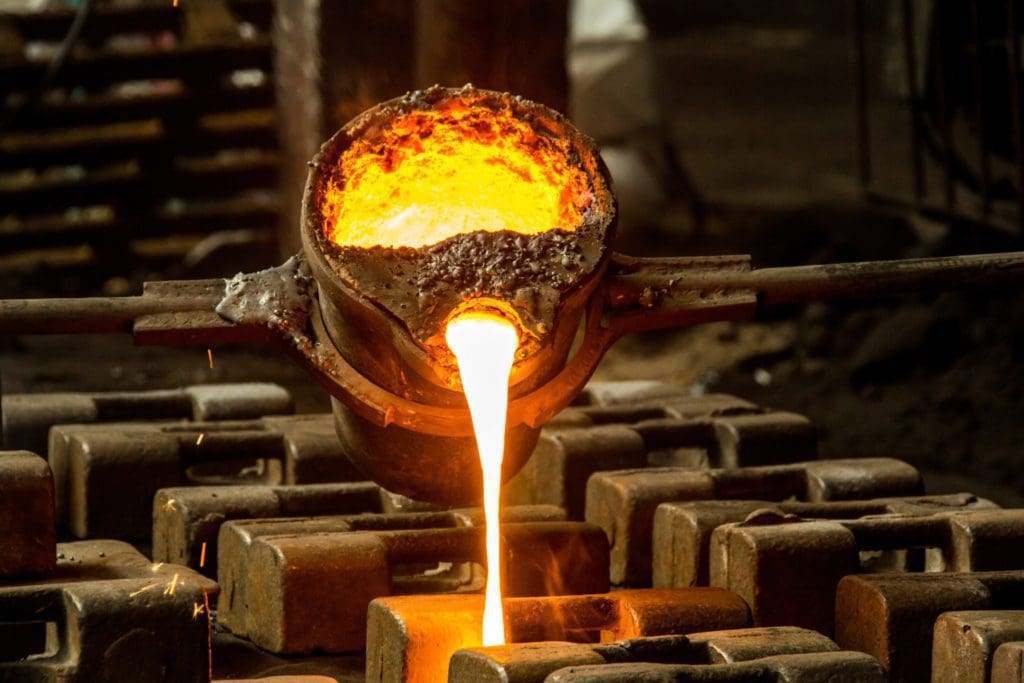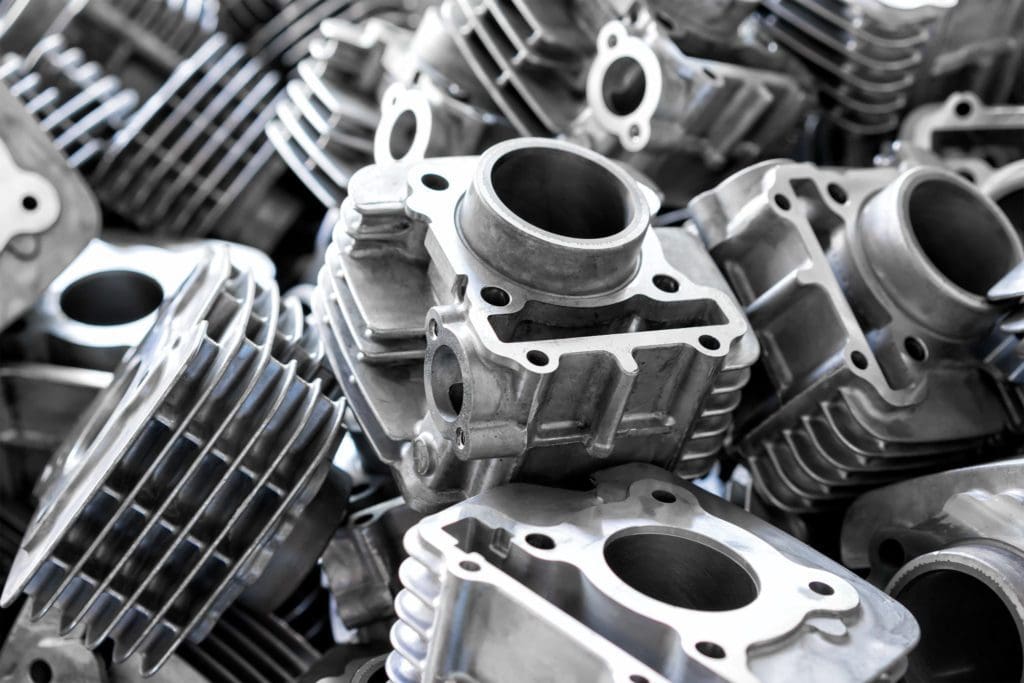Any manufacturer knows the importance of factoring in equipment maintenance, remedying wear and tear, and conducting repair work to their annual expenses. Particularly in industry, your tools get extensive use, day-in, day-out, and eventually, something will have to give. This reality is no less true if you use metal casting molds.
To get on top of your maintenance routine, it helps to get to grips with the type of damage you can incur from metal casting molds and available repair methods when that happens.
Casting molds — types and materials

Casting is the process of making metal shapes by pouring molten metal into molds — a vessel with a hollow cavity in the desired shape of the final object. The process should allow for many consistently uniform versions of the product to be produced en masse.
After the metal cools, the professional removes the objects from the mold. These molds might take the form of a B-valve mold — where you produce two halves of an object and put them together later — or articulated molds. Articulated molds are made up of multiple pieces to form the finished product, which is helpful if the final object is particularly complex.
Casting is an age-old process in the building and manufacturing sphere that was adopted and has evolved since the Bronze Age. The process itself consists of layers of systems that involve production and reclaiming materials for reuse and packaging. Unfortunately, the multivariate levels make the potential for damage more probable. Preventing damage means choosing the right casting equipment is essential. However, so is determining the proper method for repairing metal casting molds.
Heartland Repair & Coatings has been repairing metal castings in the heart of the US with high-quality welding expertise for decades. Contact Heartland Repair & Coatings for more information on metal casting mold repairs.
How can my metal casting molds get damaged?

So, what type of damage can you expect your metal casting molds to endure exactly?
Firstly, many casting molds are actually made from a blend of sand and clay that form a bonding agent around a product pattern. As a result, the sand casting mold itself is vulnerable to various factors that could affect the resulting shape and form of the casting, including poor quality materials. Industrial molds, however, tend to be made from more durable stainless steel — known as die-casting—aluminum and alloy materials.
Some common damage risks include poorly constructed molds, which could lead to casting defects.
Another form of damage could result from a faulty gating system — the mechanism by which metal is poured into the mold cavity — affecting the integrity of the mold and allowing for molten metal to escape the sprue, i.e., the area where metal enters the mold.
Poor-quality sand in sand molds could also stop the pattern of the product coming through as intended, and generally, checking the heat of molten metal could impact the mold. For instance, where sand molds are concerned, the sand is removed once the metal poured into the mold cools, and the mold is then pulled apart.
The sand can then be reclaimed and used again. However, heating the metal at too high a temperature and then cooling can alter the integrity of the sand grains, which means it is reduced in quality once reused.
General wear will also get most equipment, including sand and steel castings. Iron castings or metal molds will also be susceptible to thermal shocks, corrosion, and mechanical failures.
In all cases, to save time, money, and business, early intervention or prevention is critical to prevent undue harm from damage to your metal casting molds.
Repairing metal casting molds

If your casting molds incurred a form of damage mentioned above, there could be several solutions you’ll want to consider.
For sand casting molds, you could consider a cooling system, for example, that can control the temperature of the heat. It will cool sand without affecting the sand grains’ quality, making the reconditioned sand good enough to produce consistently uniform metal products.
However, if you don’t already use steel or metal tools, you could switch to good-quality, heavy-duty equipment and metal casting molds with several benefits. One advantage of doing so is that uniform production is essentially guaranteed. It is also a safer option as the hazards involved with working with molten metal are perhaps obvious.
You can also repair damaged molds using gas tungsten arc welding or electro-spark deposition machining. However, in both cases, the process is slow and can’t be automated. There’s also a lot of skill required for gas tungsten arc welding, and it is by no means an easy repair process.
Using Cold Spray to repair metal casting molds
The cold spray technique, however, is fast gaining popularity for repairing metal casting molds.
Cold spray, also known as supersonic particle deposition, is a process that propels particles of metal powder via a high-pressured gas — nitrogen or helium, for example — onto a surface. As soon as the particles hit the surface, they deform and bond with it.
The cold spray technique has many benefits. These benefits include the durability and strength of the substances involved, the lack of oxidation, and alloy decomposition. As well as increased portability and operability and its safety as a nontoxic and controlled product. It also has precision when it comes to temperature control. At Heartland Repair & Coatings, we feel cold spray is a valuable resource for both metal manufacturing and repairs.
Have peace of mind with fast and efficient parts repair

Heartland Repair & Coatings has adopted the cost-effective, easy, and efficient method to help repair parts in a matter of minutes. Machinery maintenance will help your business thrive, allowing you to focus on your business mission instead of wear and tear prevention and expensive repairs.
Heartland Repair & Coatings can easily help you repair assets and has been using the cold spray technique to protect several client assets. Contact Heartland Repair & Coatings now if you want to keep your equipment in great shape or repair already damaged molds.
Heartland Repair & Coatings works with clients across various industrial sectors, including oil and gas, mining, heavy industrial, and petrochemical, and it works across America. Get a quote now for peace of mind for your production needs.
